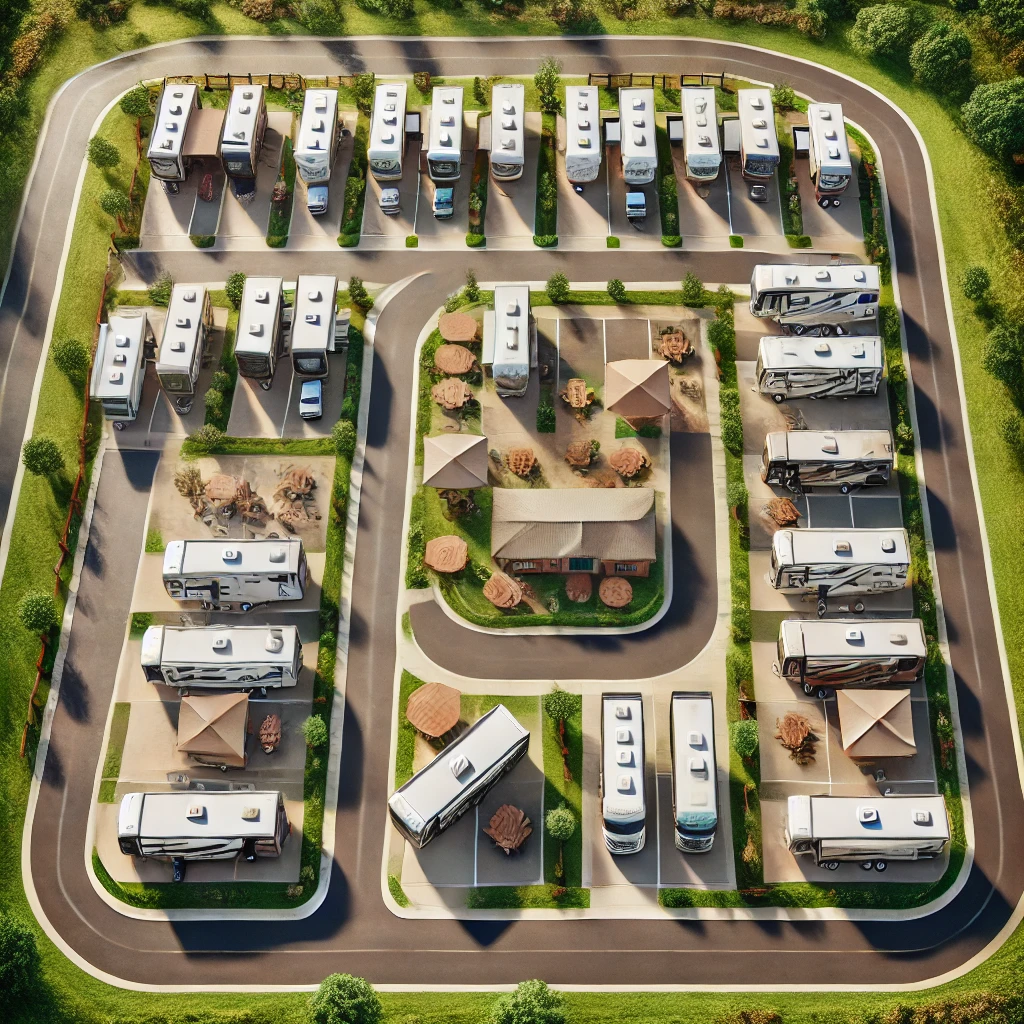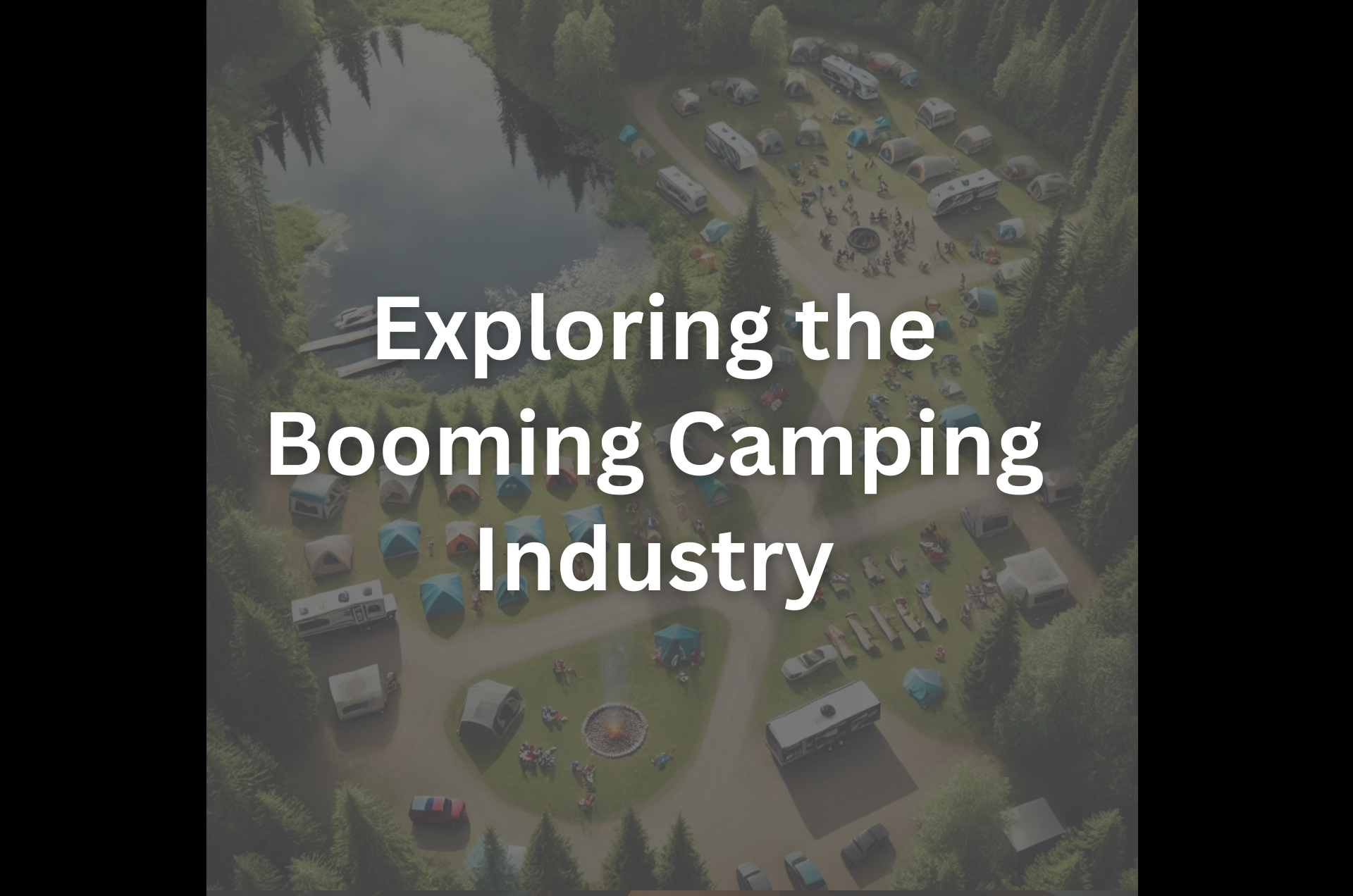**Disclosure:** We believe in honesty and transparency to the fullest extent. Some of the links on this blog are affiliate links, meaning, at no additional cost to you, we will earn a commission if you click through and make a purchase. This is one of the simplest ways you can support us.

Overview of the Camping Industry
The camping industry offers an immersive and captivating way to experience the outdoors, providing nature lovers with a chance to find tranquility, recreation, and a deep connection with the natural world. Globally, the campground market continues to thrive and expand. In 2020, nearly 88 million people in the United States alone went camping, according to the Outdoor Industry Association (OIA). The industry injects millions of dollars into both the U.S. and global economies, and serves as a platform for fostering long-lasting bonds between families, friends, and the environment.
Let’s explore the current state of the camping industry and its exciting trends.
The Rise of Camping: A New Era
In recent years, camping has evolved beyond its traditional image of rugged survivalism or outdoorsmanship. Younger, urban audiences are increasingly drawn to camping as a way to escape from their fast-paced lifestyles and reconnect with nature. The industry has adapted to meet this demand, offering a wide range of experiences, from luxurious glamping resorts to simple, rustic campsites. With more options than ever before, today’s camping industry caters to a broad spectrum of tastes and budgets, appealing to everyone from adventure-seeking backpackers to comfort-loving glampers.

Current Trends in the Camping Industry
- Glamping (Glamorous Camping): The glamping trend has surged in popularity, combining the beauty of nature with the comforts of home. Luxury tents, cabins, and even treehouses now offer modern amenities like Wi-Fi, plush beds, and full kitchens. Between 2014 and 2021, glamping sites increased by 28.9%, according to the National Association of RV Parks and Campgrounds (ARVC). This trend appeals to those who want to experience nature without sacrificing comfort.
- RV Ownership: Recreational vehicle (RV) camping is experiencing steady growth, especially among families and retirees. RVs offer a mobile yet comfortable camping option, and the number of RV shipments has been rising year after year. Campgrounds are increasingly accommodating RV owners with larger sites and tailored amenities, making it easier than ever to hit the road in style.
- Sustainability: As environmental awareness grows, so does the demand for sustainable camping practices. Many campgrounds are responding by implementing eco-friendly measures such as solar power, recycling programs, and composting toilets. Campers are also seeking ways to reduce their environmental impact, contributing to a more sustainable outdoor recreation industry.
The Economic and Social Impact of Campgrounds
The camping industry not only provides individuals with outdoor adventure but also serves as a significant economic driver for local communities. Campgrounds stimulate local economies by attracting campers who spend money on food, fuel, lodging, and local attractions. According to a study by ARVC, campgrounds generated over $14.6 billion in local spending and supported more than 200,000 jobs in 2020 alone. This economic activity helps small businesses like restaurants, shops, and service providers thrive.
Additionally, campgrounds foster social bonds and strengthen community ties. They offer a space for people from different backgrounds to gather, share experiences, and build memories together. In many areas, campgrounds are central to the local culture, promoting the region’s natural beauty and recreational opportunities.
Identifying Your Target Market
The camping industry attracts a diverse array of individuals, each with unique interests and preferences. Understanding these segments can help businesses tailor their services effectively:
- Families: Families are a key demographic for campgrounds, as camping offers an affordable way to create memories and bond. Many campgrounds offer family-friendly amenities like playgrounds, nature trails, and educational programs.
- Backpackers and Outdoor Enthusiasts: For adventurous souls seeking to explore the backcountry, campgrounds serve as a convenient base for hiking, climbing, and exploring remote areas.
- RV Owners: RV camping appeals primarily to baby boomers, retirees, and increasingly, millennials. Campgrounds designed with spacious RV sites and amenities like hook-ups and dump stations cater to this growing group of mobile campers.
- Outdoor Events and Groups: Many campgrounds accommodate large groups, offering special areas for events like Scout troops, church retreats, and family reunions, making them a go-to destination for organized gatherings.
The Future of the Camping Industry
The camping industry shows no signs of slowing down. With the rise of glamping, increased RV ownership, and a growing emphasis on sustainability, campgrounds are reshaping the landscape of outdoor recreation. As the industry continues to evolve, it will cater to a wider range of preferences, ensuring that everyone—from hardcore adventurers to luxury-seeking vacationers—can enjoy the great outdoors.
Whether you’re a seasoned camper or just embarking on your first outdoor adventure, the camping industry is ready to welcome you. Pack your gear, choose your campsite, and prepare for an unforgettable experience as you explore the beauty and serenity of nature.










